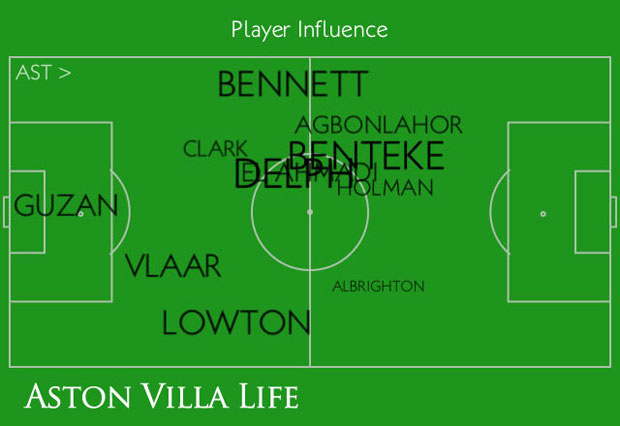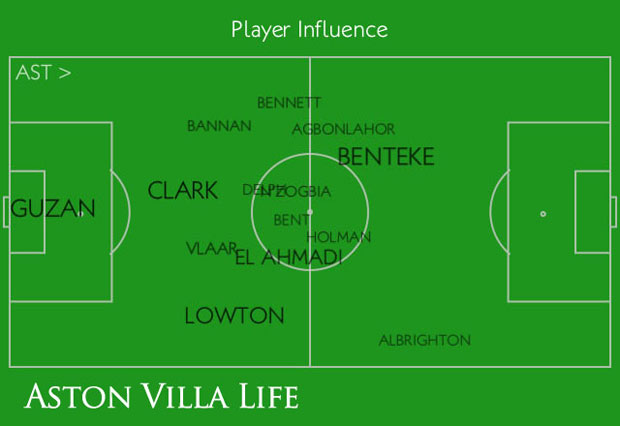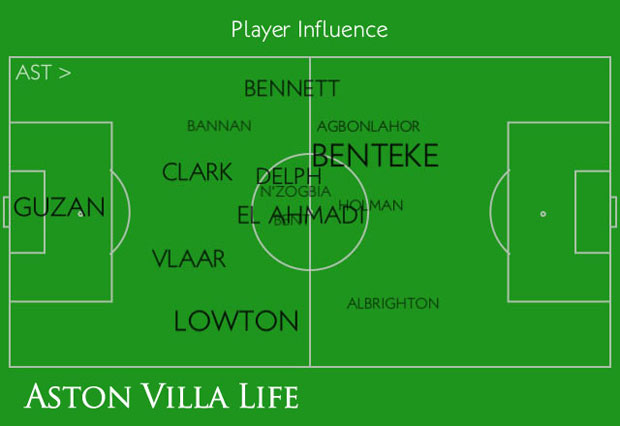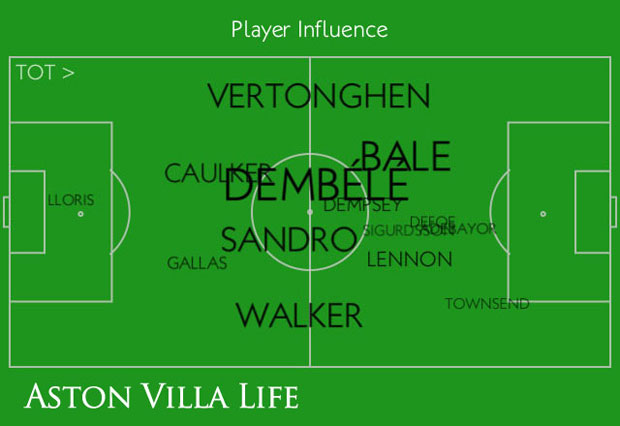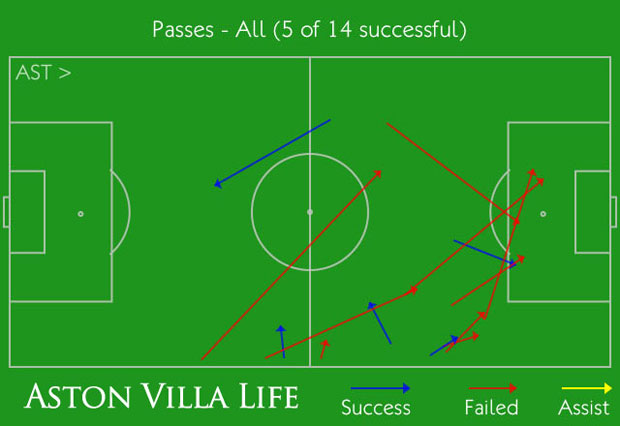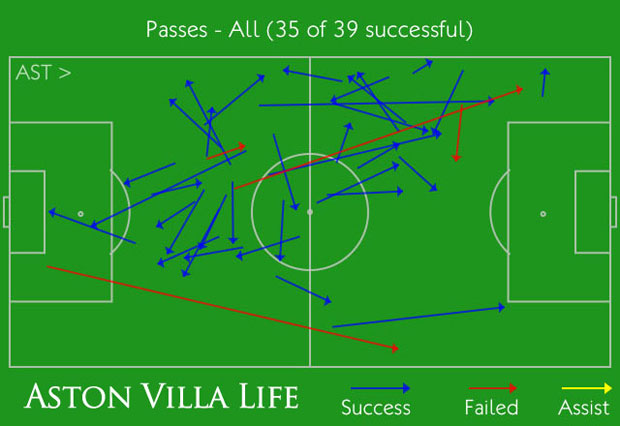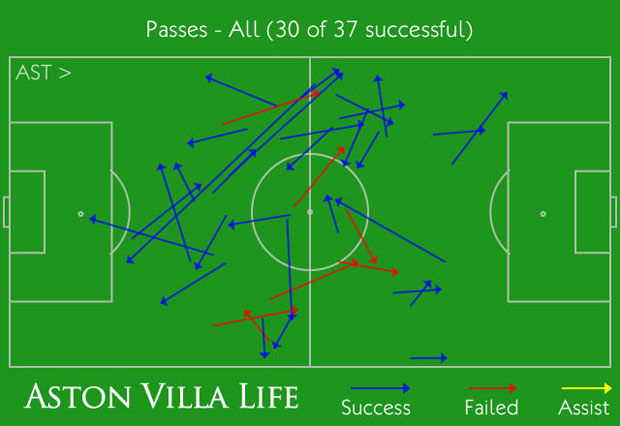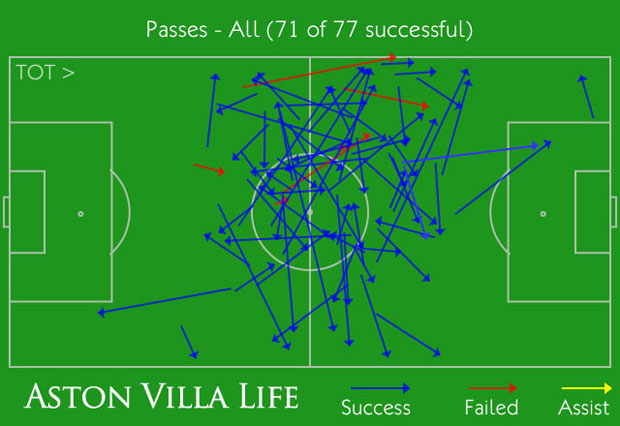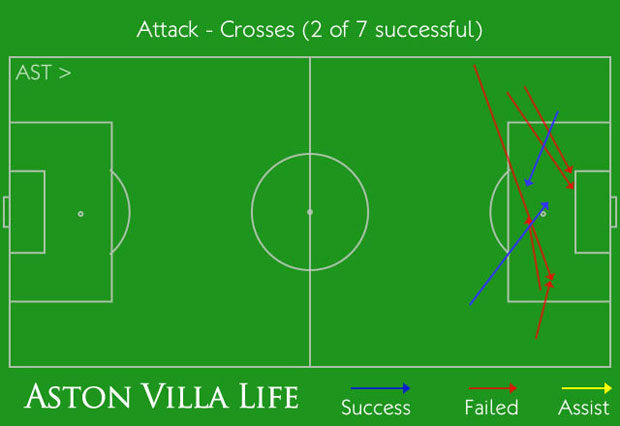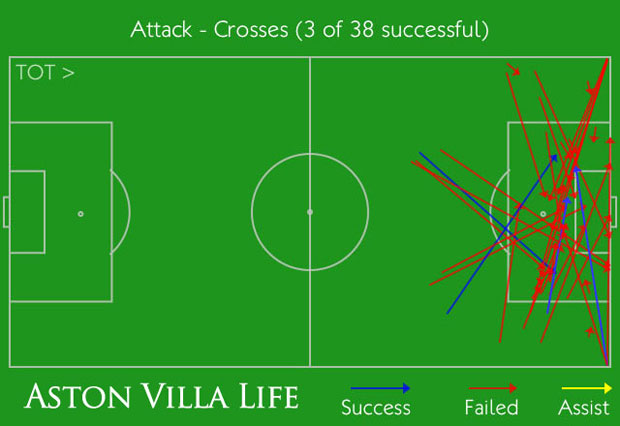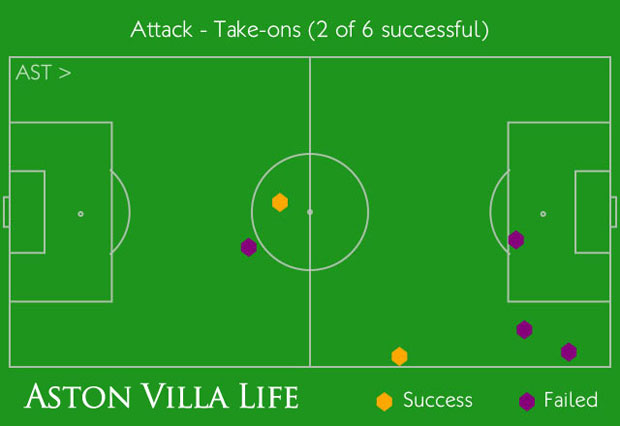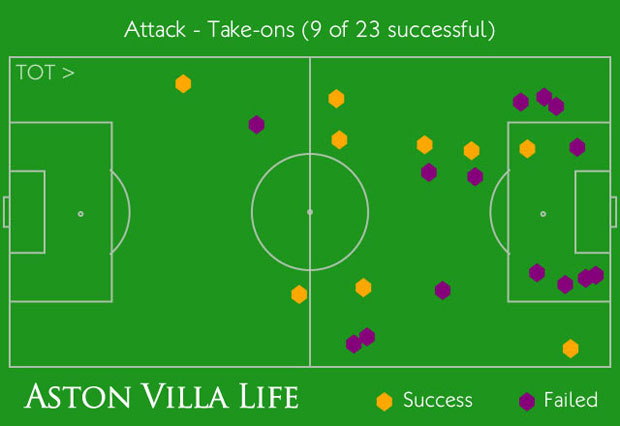

After a first half where Aston Villa managed to play well, ensuring that the score was 0-0 but with a strong set of figures, it was the second half where things started to come undone. Steven Caulker claimed a goal after Jermain Defoe put Villa one behind before Aaron Lennon made it two cruelly nutmegging Joe Bennett before slotting it past Brad Guzan.
Sadly for Bennett, things were to get worse as he left the field on a stretcher leaving Villa to play out the remaining fifteen minutes with ten men.
Let’s talk tactics
With the benefit of hindsight, some fans may take the loss to be an opportunity to throw many of Paul Lambert’s tactical choices back in his face. There’s no doubt that keeping Darren Bent on the bench was a strong minded choice, though there was enough logic behind it for the plan to be backed. Other fans may have questioned Villa’s double substitution as more attackers were included after going one behind. Fans certainly can’t question the attacking ethos that Lambert is putting into the team, but attacking alone will not win games.
Part of Villa’s issues at present come down to a short term vs long term strategy of how to move forwards. With historic financial circumstances leaving the big spending option off the table, then things aren’t fixed short term in this situation, no matter who the manager is.
After all, let’s look at the first team line up for the Sunday game. Of Villa’s eleven starters, over half have been new additions. Of course, part of this is down to managerial choice as Lambert has no doubt picked his team, but Villa undoubtedly needed a shake up, and a shake up they have had.
Influence, or a lack thereof, Villa’s main issue
Villa started with a 4-2-3-1/4-3-3 hybrid and, as their overall influence statistic shows, the team played fairly deep throughout with Benteke the most influential player for the Birmingham club.
However, if we compare that to the first and second half influence graphics, Villa showed far less influence in the second half.
Below is Villa’s first half influence graphic:
And Villa’s second half influence graphic:
Both halves showed fairly deep play, with Marc Albrighton appearing to be playing as a winger who stayed wide, something that I doubt was the overall plan.
Here is Villa’s overall influence graphic:
To finalise the comparison, below is the Tottenham overall influence graphic:
Breaking it down
Speaking of Albrighton, his width, normally his most effective weapon against opposition teams, was the undoing of his involvement in the team. His completion rate, a woeful 36%, was a poor contribution and insufficient to argue for his inclusion in the team for the next match. Albrighton only completed five of his twelve short passes, and none of his two long passes. If there’s one thing that is coming out of Lambert’s early team choices, it is that his players need to cut out the long passes, a remnant of years the existing squad. Below is Albrighton’s passing graphic:
Getting back to Albrighton, compare and contrast his pass completion to that of Fabian Delph who managed to complete 90% of his passes, or even Karim El-Ahmadi, who managed a solid 81% completion rate. Both players managed more passes, more successful passes, and were positioned correctly. Albrighton didn’t and, I’m sad to say, is another example of Villa’s academy products being unlikely to be the solution.
To compare visually, below is Delph’s passing:
And El-Ahmadi’s passing:
It wasn’t just the midfield who managed solid passing statistics though as Brett Holman completed 91% of passes, and Gabby Agbonlahor completing 88%. Christian Benteke managed a comparatively low (compared to most of the attacking players) 70%, but that was nearly double Albrighton’s completion figures.
Despite the 2-0 loss, Villa’s defence showed strong stability in the middle with Ciaran Clark and Ron Vlaar both managing to complete the majority of all their defensive responsibilities, with Clark managing 100% completion of his attempted tackles and clearances (both headed and non-headed).
Matthew Lowton was probably the weakest link in Villa’s defence, following on from being partially responsible for Shane Long’s goal last week, and his passing completion rate of 68% was comparatively weak vs the rest of his defensive team mates (Vlaar – 82%, Clark – 79%, Bennett – 81%) with recent performances arguing a strong case for letting Eric Lichaj back in the team. Of course, much will hang on the injury Bennett suffered and if it keeps him out of the team.
Looking at the opposition
Of course, it would be wrong to just look at Villa’s team with Tottenham having strong influence via Moussa Dembele, a player who managed an excellent 92% pass completion rate, contributing as it did to his role as the most influential player of both teams. Sandro and Aaron Lennon also managed 90% completion rates, a massive amount for the midfield with only Gareth Bale, with a comparatively low 70% completion, being the surprise low achiever of the Spurs midfield. Below is Dembele’s graphic for illustrative purposes:
Back in defence, every Spurs player managed over 85% pass completion with three of the four managing over 90%. The passing figures for Spurs defence were: Caulker – 92%, Walker – 93%, Gallas – 85%, Vertonghen – 90%.
Those figures show just how well Spurs were passing the ball, even though Villa’s figures were, on the whole, far from poor. Given that Spurs managed to get by, and even win, at Manchester United, with a very poor possession rate, they made the most of their 55.9% managed on Sunday.
Crosses & take-ons
Next, I wanted to look at crosses. The amount of crosses attempted by Spurs showed a continuing pattern that Villa’s lack of width in midfield invites pressure on to them in deeper area. Whilst Spurs didn’t manage to take advantage of many of their crosses, completing just three of 38 attempted, it does illustrate a weak area where Villa can be punished by a moment of brilliance.
Below is the graphic for Villa’s crosses:
And Tottenham’s:
Villa were second best again at take-ons also attempting six vs. Spurs 23, though Spurs only completed nine and Villa only managed two completed take-ons.
Below is the graphic for Villa’s take-ons:
And Tottenham’s:
Final thoughts
In summary, there were questions that must be asked.
Firstly, was Villa’s attempt to try and win the game after the first goal went in. Nobody can question trying to win the game, but the team did look shaky after the substitutions and quickly conceded a goal when stability may well have helped, not change. With Villa notoriously shaky when losing a goal, I felt the change was a little quick, though I obviously trust Lambert’s ability to make changes.
Secondly, did Holman need to come off so Bannan could come on? Nobody can doubt that Bannan is one of the team’s free kick takers, but the use of that substitution was puzzling, and ultimately relevant when Bennett was stretched off with no substitutions left. Villa may well have weathered the storm in terms of not conceding following Bennett’s injury, but their ability to attack was stifled, something that ultimately counteracted Lambert’s earlier tactic.
Sadly for Villa, it was a game where the team were second best. Whilst I made a point in recent games that dominating statistics alone won’t win games for Villa, they can not afford to cede so much across the pitch and expect to win. Sad as it is to say, Villa’s performance overall was only worth the loss that the team received.
Podcast: Play in new window | Download
